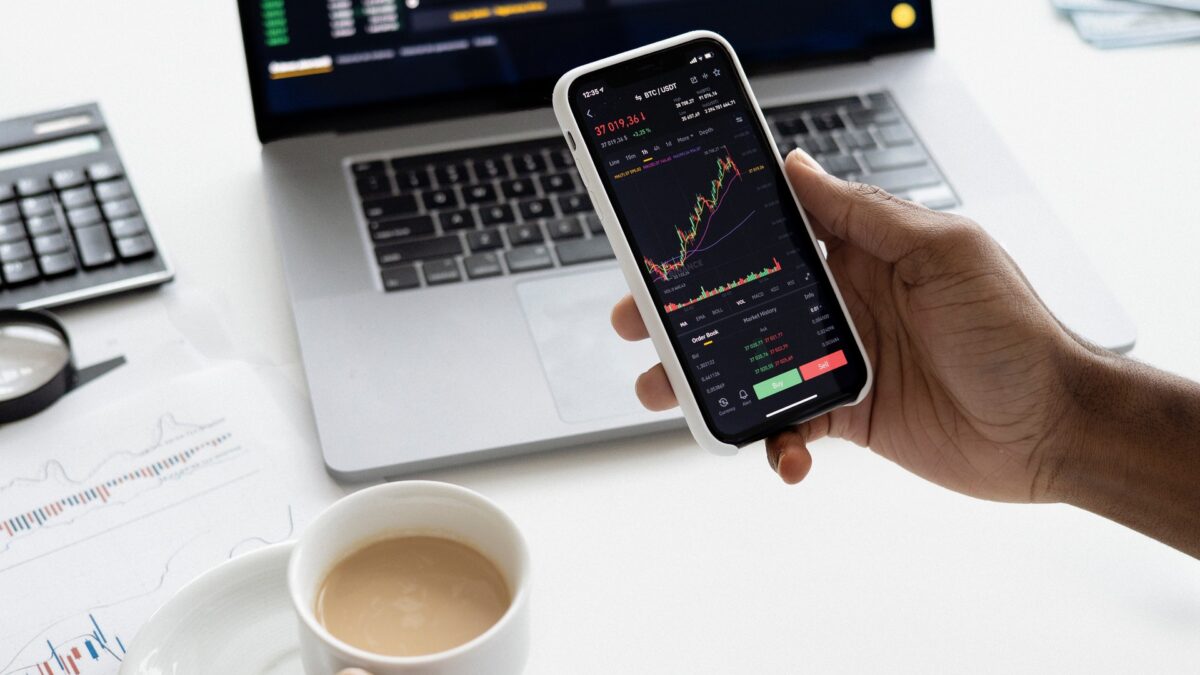
How to Spend More Intentionally & Make a Bigger Impact with Your Dollars
April 28, 2022
The SECURE Act of 2019 and Your Estate Plan
May 23, 2022If you’re growing increasingly concerned about financial markets, you’re not alone. Indeed, 2022 has been a challenging year for investors. Earlier this month, The New York Times reported that one in every 12 trading days so far this year has closed with a S&P 500 Index price change of 2.5% or more.
To put this information in perspective, there was only one day in 2021 when the S&P 500 gained or lost more than 2.5%. Meanwhile, the fixed income market provides little solace as rising interest rates push bond prices lower.
For many of you, it may feel like there’s no place to hide. As long-term investors, there are always going to be times when our patience and resolve are tested. Now is no doubt one of those times. Yet periods of market volatility are completely normal—and even expected—over the long run.
While it isn’t always easy, we believe sticking to your long-term investment plan remains the best course of action. Alternatively, panicking and going to cash (also known as market-timing) can undo years of progress you’ve made towards your financial goals.
Why Is Volatility Spiking?
You’ve probably noticed that prices have been elevated for some time. In March, the annual inflation rate in the U.S. rose to 8.5%, its highest level since December 1981. While the Federal Reserve initially called inflation “transitory” due to pandemic-related supply chain issues, their outlook has since shifted as sky-high prices persist.
As a result, the Fed has initiated a series of interest rate hikes, which are expected to continue into 2023. Investors are becoming increasingly concerned about what the combination of rising prices and rising interest rates means for the U.S. economy. Meanwhile, Covid-19 lockdowns in China and the ongoing war in Ukraine continue to plague supply chains, adding to pricing pressures and economic uncertainty worldwide.
As investors grow more fearful, market volatility continues to rise. And after a relatively calm 2021, it’s not surprising that the recent uptick in volatility is causing investors to panic.
The Pitfalls of Market-Timing
Like many others, you may be tempted to abandon your investment plan. After all, cash seems like the safer alternative to a fluctuating portfolio balance.
Unfortunately for the vast majority of investors, panicking and going to cash is nearly always worse than weathering the storm. Even the savviest investors are unable to time the market perfectly. And those who get lucky can’t do it consistently.
That’s because market-timing requires you to get two decisions right: when to exit the market and when to get back in. So, while going to cash may help you avoid the worst trading days, you’re also more likely to miss the ensuing recovery.
A recent study from Bank of America shows how staying the course is, on average, more profitable than attempting to time the market. Looking at data beginning in 1930, BOA found that if an investor missed the S&P 500′s 10 best performing days per decade, they would earn significantly less (28%, cumulatively) than those who stayed invested the entire time (17,715%).
Here’s the Good News
We admit, the headlines are scary. The financial media will have you believe that there’s no reason to be optimistic about the future. Yet it’s important to remember that the media is incentivized to create emotional havoc. In other words, headlines rarely tell the whole story.
Indeed, there are many reasons to believe that 2022 won’t be a repeat of 2008. For example, corporate profit margins are near multi-decade highs, according to J.P. Morgan’s Q2 2022 Guide to the Markets, and capital expenditures are also on the rise.
In addition, consumer balance sheets remain the strongest they’ve been in decades. Employee wages are up and unemployment is down. Moreover, a recent Fannie Mae report found that the average credit score across all homebuyers is 754 (compared to 717 from 2004-2007).
While we can’t predict the future, these data points may bode well for the overall economy. At the same time, measures of investor sentiment have reached their most extreme levels since 2009. In April, the AAII Investor Sentiment Survey recorded the lowest number of bullish investors (less than 20% of those surveyed) in nearly 30 years and the highest number of bearish investors since 2009.
On the surface this may seem like bad news. However, extremes in investor sentiment tend to be contrarian indicators for the stock market in the near-term. Historically, when stock market bulls have dropped below 20%, the proceeding 12 months were positive for stock prices with one exception—the Great Financial Crisis of 2008-2009.
Stay the Course
We understand how challenging it can be to separate your emotions from your investment results. A sound investment plan is often the best antidote to market-induced panic. Rest assured we are keeping an eye on your investments so that you don’t have to. Instead, we urge you to focus on the things you can control, like paying down debt, building up your emergency funds, and contributing to your retirement accounts.
As always, we appreciate your ongoing trust and are here for you if you need anything.
Content in this material is for general information only and not intended to provide specific advice or recommendations for any individual. All performance referenced is historical and is no guarantee of future results. All indices are unmanaged and may not be invested into directly.
Related posts
Live Well. Do Good.












